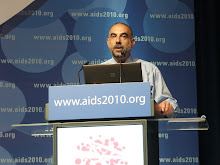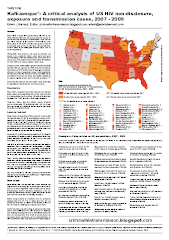http://wave3.com/Global/story.asp?S=7072021 By Steven Reinberg, HealthDay Reporter THURSDAY, Sept. 13 (HealthDay News) -- The HIV epidemic among gay men can't be explained by their number of sexual partners, U.S. researchers report. More than half the new HIV infections diagnosed in the United States in 2005 were among gay men, a team at the University of Washington, Seattle, noted. In addition, as many as one in five gay men living in cities may be HIV-positive. But the sexual behaviors of gay and heterosexual men in the United States may not be as different as most people think, the researchers said. In fact, two surveys found that most gay men have a similar rate of sex with unprotected partners compared to straight men or women. "Just because gay men continue to have much higher levels of HIV, we can't jump to the conclusion that that means that they are promiscuous or that prevention messages aren't working," said lead researcher Steven Goodreau, an assistant professor of anthropology. In the study, Goodreau and a colleague, Dr. Matthew R. Golden, analyzed data from two large population-based surveys. Using those figures, they estimated how many sex partners gay men and straight men and women have, and what number of gay men have either insertive or receptive anal sex, or both. The report is published in the Sept. 12 online edition of Sexually Transmitted Infections. "We found that even if gay men behave the same way heterosexuals do -- in terms of sexual partner numbers -- gay men would still have a huge HIV epidemic," Goodreau said. Conversely, "even if heterosexual men behaved the way gay men do, they would not have a huge HIV epidemic," he added. In fact, for straight men and women to experience an epidemic of HIV infection as widespread as that of gay men, they would have to have an average of almost five unprotected sexual partners every year -- almost three times the rate of the average gay male, Goodreau and Golden found. So, why the higher HIV risk for gay men? "A couple of different things could give gay men an overall higher risk for HIV than heterosexuals," Goodreau said. One reason HIV remains epidemic among gay men is that anal sex is much more conducive to the transmission of HIV transmission than is vaginal sex, the researcher said. "That puts gay men at much higher risk overall," he said. In addition, HIV transmission is more easily transmitted through the penis than via the vagina or the anus, Goodreau said. Heterosexuals tend to maintain the same role (insertive vs. receptive), while gay men can switch roles -- making the transmission of HIV more likely, he noted. So, for gay men and straight men who have the same number of partners and have unprotected sex, gay men are more likely to transmit and receive HIV, Goodreau said. "That's why you can get huge epidemics among gay men and virtually none among heterosexual men," he said. To end the HIV epidemic, gay men would need to have significantly lower rates of unprotected sex than those seen among the straight men, Goodreau believes. One expert believes the study does have its flaws, however. "The information here is mostly based on people's reports of their own behavior," said Philip Alcabes, an associate professor at the School of Health Sciences of Hunter College/City University of New York. "When trying to make use of information on self-reported sexual behavior, we have to remember that it isn't clear that anybody tells the truth," he said. More information For more on HIV, visit the U.S. Department of Health and Human Services. SOURCES: Steven Goodreau, assistant professor, anthropology, University of Washington, Seattle; Philip Alcabes, Ph.D., associate professor, School of Health Sciences, Hunter College/City University of New York; Sept. 12, 2007, online edition, Sexually Transmitted Infections Copyright © 2007 ScoutNews, LLC. All rights reserved.
Number of Partners Doesn't Explain Gay HIV Rate![]()
Thursday, 13 September 2007
Behaviour: Gay men's 'promiscuity' not the reason for increasing HIV transmission in US
Archive
Is this blog useful? Let me know
If you find this blog useful, please let me know, and if you find it really useful, please also consider making a small donation.
Thank you.
(Clicking on the Donate button above will take you to Paypal.)








0 comments:
Post a Comment